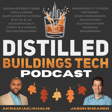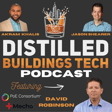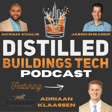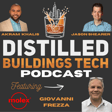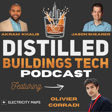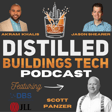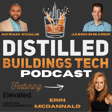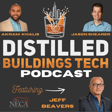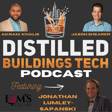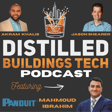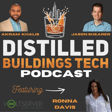
Andrew Lu on PoE, Fault Managed Power, and the Future of Electrified Buildings
🔥 Episode Summary
In this electrifying episode, hosts Jason Shearer and Akram “AK” Khalis sit down with Andrew Lu, a Cisco Systems leader and innovator, to dive into the convergence of Power over Ethernet (PoE) and Fault Managed Power (FMP) — and how these technologies are reshaping the modern smart building landscape.
From his license plate to his Cybertruck, Andrew lives and breathes this revolution. He unpacks the technical, economic, and political drivers behind FMP’s rise, and outlines the “DC donut of viability” — a concept that helps frame where DC power, PoE, and FMP fit best in a building’s infrastructure.
Whether you’re designing networks, optimizing energy, or just trying to future-proof your facilities, this episode gives you a front-row seat to the next power paradigm.
🛠️ Topics Covered
- Andrew’s career journey through three tours at Cisco
- The origin of his “FMP+PoE” Cybertruck license plate
- Why FMP (Class 4) and PoE (Class 2) are the safest, most scalable ways to electrify buildings
- The “DC Donut of Viability” — where power delivery makes sense in smart buildings
- FMP’s potential to bring single-pair Ethernet (T1L) into the mainstream
- Global code adoption and the regulatory landscape (U.S., Canada, EU)
- The FMP Alliance and the role of interoperability, education, and scale
- PoE lessons shaping the FMP rollout (CapEx neutrality, automation value, and labor trade-offs)
- The role of DC technologies in long-distance, grid-level energy resiliency
- Insights from DC World Paris and the international perspective on DC innovation
⚡ Featured Technologies
- PoE (Power over Ethernet)
- FMP (Fault Managed Power)
- ArcSafe DC, T1L & SPE
- Structured Cabling and Ethernet-based power delivery
🥃 This Episode’s Drink
- Old Soul Bourbon — a 2022 cask-strength private barrel selection from Fondren Cellars in Jackson, Mississippi (120 proof!)
📅 Release Schedule
Episodes drop every other Monday, bringing together spirits, smart infrastructure, and surprising insights.
🎧 Who Should Listen?
- Electrical and network engineers
- Building owners and energy strategists
- Smart building consultants and integrators
- Policy makers and standards contributors
- Technologists shaping the future of low-voltage power
📣 Connect & Follow
- Follow the FMP Alliance: FMPAlliance.org
- Subscribe on Apple Podcasts, Spotify, or YouTube
- Connect with Andrew, Jason, and AK on LinkedIn
- Comment and share what you’d like to hear in future episodes
